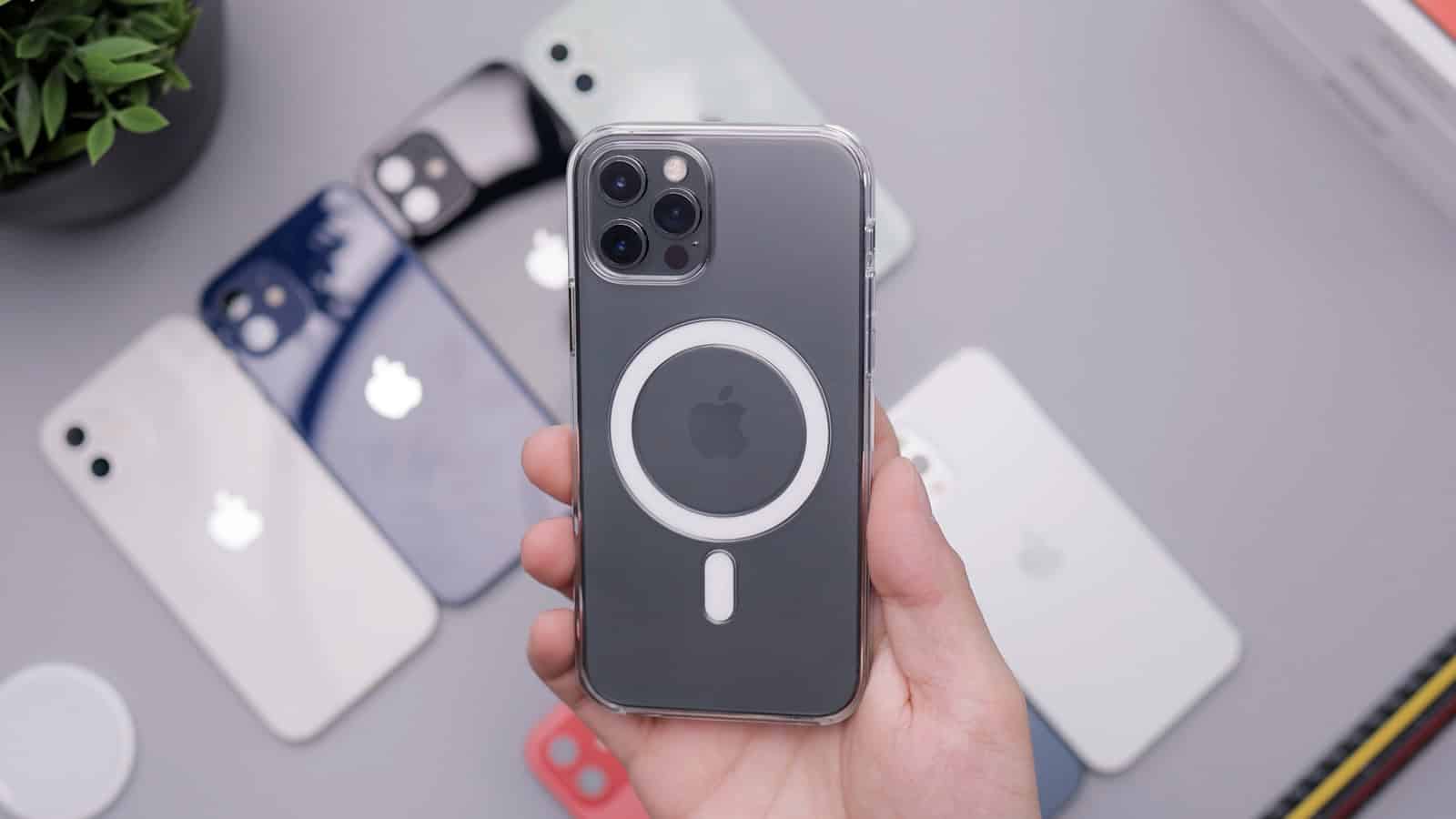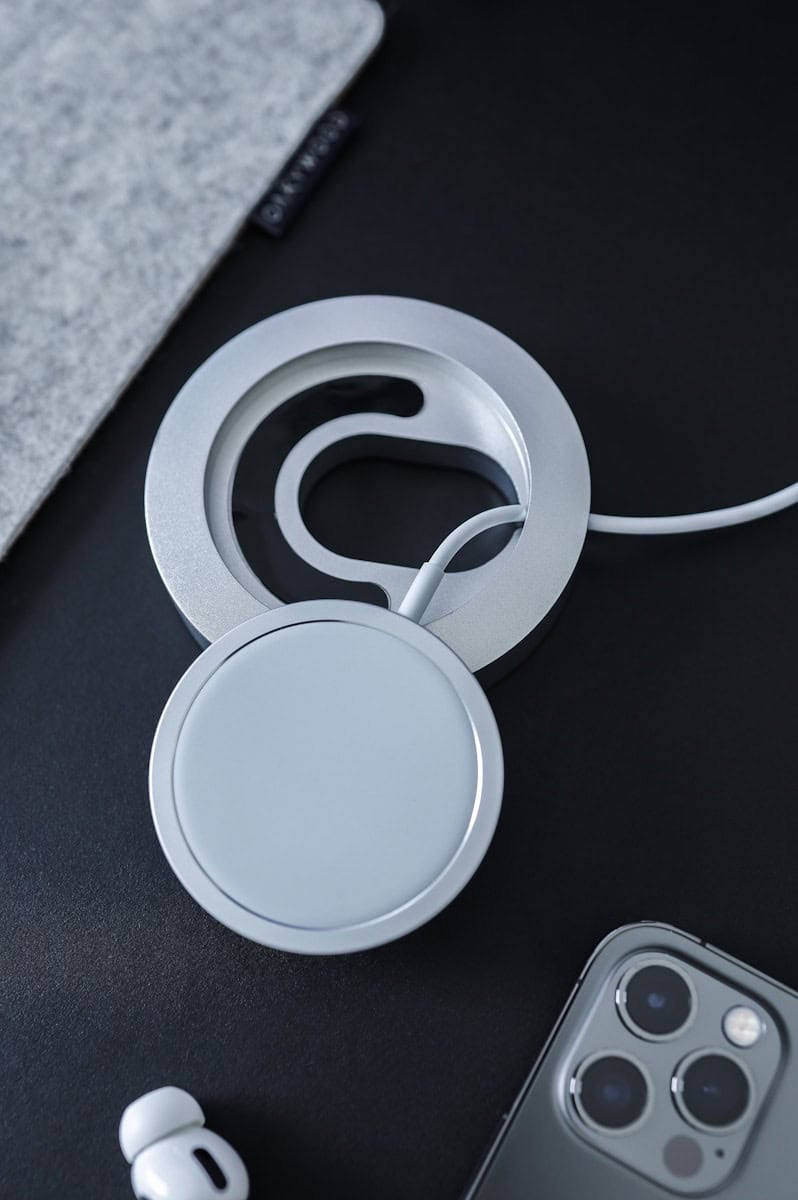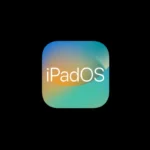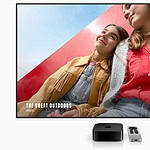MagSafe technology has revolutionized the way we charge our devices wirelessly. It uses a magnetic array around a charging coil to perfectly align the charger with the device, ensuring efficient power transfer. With its introduction by Apple, MagSafe not only improves charging efficiency but also extends to enhancing accessory attachment, making it a versatile tool for users. The design of MagSafe means that power is dynamically optimized for the device it charges, which is part of a broader effort to improve the wireless charging experience.
Compared to traditional wireless chargers, MagSafe delivers faster and more reliable charging. For instance, Apple’s MagSafe chargers can provide up to 15 watts of power, offering a balance of speed and convenience without physical connectors. Incorporating MagSafe into Apple’s ecosystem has had a significant influence on phone cases, mounts, wallets, and even car chargers. These accessories can magnetically attach to the back of iPhones, providing users with seamless integration and enhanced functionality. Safety is also a benefit, as the magnetic connection easily detaches when enough force is applied, preventing accidents that might otherwise damage the device or the charger.
Understanding MagSafe Charging
Apple’s MagSafe technology offers a convenient way to wirelessly charge compatible iPhones (iPhone 12 and newer), AirPods models, and various accessories. MagSafe uses magnets for precise alignment and offers faster charging speeds than standard Qi wireless chargers. But like any technology, it has both benefits and drawbacks.
Pros of MagSafe Charging
- Fast Wireless Charging: MagSafe chargers can deliver up to 15W of power to compatible iPhones, charging them faster than traditional Qi wireless chargers.
- Secure Alignment: The magnets ensure your phone is perfectly positioned on the charger, preventing misalignment that can interrupt charging.
- Versatile Accessories: MagSafe enables a variety of magnetic accessories like wallets, cases, and power banks, adding convenience and functionality.
- Reduced Cable Wear: Since MagSafe docks magnetically, it lowers wear and tear on your iPhone’s Lightning port from constant plugging and unplugging.

Cons of MagSafe Charging
- Limited Compatibility: MagSafe charging is currently only available on iPhone 12 models and later, and select AirPods cases.
- Potential Case Issues: Some thicker cases may interfere with the magnetic connection or obstruct charging.
- Cost: MagSafe chargers and accessories are generally more expensive than their non-MagSafe counterparts.
- Heat Generation: Users occasionally report that MagSafe chargers can generate more heat than standard wireless chargers.
MagSafe Accessories
Here’s a quick look at some popular MagSafe accessories:
| Accessory Type | Description |
|---|---|
| MagSafe Charger | Simple magnetic puck for wireless charging |
| MagSafe Duo Charger | Foldable charger for both iPhone and Apple Watch |
| MagSafe Wallet | Magnetic wallet for cards and ID |
| MagSafe Battery Pack | Portable magnetic power bank |
Is MagSafe Worth It?
MagSafe offers a faster and more seamless wireless charging experience, especially when paired with its unique accessories. However, the limited device compatibility and higher price tag are factors to consider. If you own a compatible iPhone and are looking for the best wireless charging solution, MagSafe may be a worthy investment.
Is MagSafe Only For Apple?
While MagSafe is an Apple-developed technology, it is built upon the open Qi wireless charging standard. This means that MagSafe chargers can charge Qi-compatible Android phones and other devices wirelessly. However, these devices won’t be able to benefit from the magnetic alignment and some of the faster-charging capabilities that MagSafe offers for Apple devices.
Some accessory makers create MagSafe-compatible cases or adapters for Android phones, offering a way to utilize MagSafe accessories with non-Apple devices.
Benefits of MagSafe Charging
We’ve already covered some benefits in the “Pros” section, but here’s a recap emphasizing the key advantages:
- Efficiency: Perfect alignment maximizes charging efficiency, leading to faster charging speeds.
- Convenience: Effortless connection and strong magnetic hold make MagSafe convenient for one-handed use.
- Ecosystem: MagSafe enables a unique ecosystem of accessories specifically designed to take advantage of the technology’s capabilities.
Difference Between MagSafe and Normal Wireless Charging
Here’s a breakdown of the key differences between MagSafe and standard Qi wireless charging:
- Alignment: MagSafe uses magnets for precise alignment, ensuring maximum charging efficiency. Qi chargers require careful manual placement.
- Charging Speed: MagSafe can deliver higher wattage (up to 15W for compatible iPhones) compared to the standard Qi limit (often 7.5W).
- Accessories: MagSafe’s magnetic system opens up a world of snap-on accessories that standard Qi chargers can’t support.
Issues with MagSafe
While MagSafe offers advantages, some potential downsides are worth mentioning:
- Markings on Cases: The strong magnets can sometimes leave circular marks or impressions on leather or silicone cases.
- Compatibility Issues: Some very thick or textured cases may not be MagSafe compatible.
- Credit Card Interference: The magnets in MagSafe wallets may demagnetize or damage credit cards with magnetic stripes.
Key Takeaways
- Efficient magnetic alignment enhances charging
- Optimized power delivery improves user experience
- Accessory ecosystem expanded with magnetic technology
MagSafe Charging Technology
MagSafe is Apple’s advanced technology that combines magnets and wireless charging capabilities, providing an innovative way to charge compatible devices.
Design and Functionality
MagSafe uses a ring of magnets to align the charger with the charging coil inside the device. This ensures efficient power transfer and a secure fit. The design allows for a seamless attachment, so positioning the device correctly on the charger is effortless. With MagSafe, users get the convenience of wireless charging with the added stability of a magnetic lock.
Compatibility and Accessories
Compatible devices include certain iPhone models, Apple Watch, and AirPods with a wireless charging case. MagSafe accessories, such as cases and wallets, snap onto the back of an iPhone. They allow for easy attachment without hindering the wireless charging process. Stands and car mounts designed for MagSafe provide hands-free use while maintaining charging capabilities.
Charging Efficiency and Standards
The MagSafe charger can support up to 15 watts of power on compatible iPhones, resulting in faster wireless charging than traditional Qi chargers. However, actual charging speed can vary based on factors like temperature and battery health. The technology adheres to the Qi standard, ensuring it can still charge Qi-enabled devices at their supported speeds, even if they’re not MagSafe-specific.
Impact on Accessories and Safety
MagSafe introduces a new way for iPhone users to charge their devices and enhance their accessory use. Magnetic technology ensures easy attachment and a strong connection.
Accessory Ecosystem
The accessory market has expanded with the introduction of MagSafe. Users now have a wide range of Apple-certified MagSafe products to choose from. These include cases, docks, mounts, and even a leather wallet that snaps onto the back of the phone. These official accessories sit alongside offerings from third-party manufacturers like Belkin and Anker. However, users should note that non-certified accessories might not offer the same peak power delivery or the security features that come with MagSafe-certified products.
Safety and Security
MagSafe accessories have built-in safety features. Magnets align the charger with the iPhone to enhance the charging efficiency and to prevent energy waste. The system is also designed to detect objects that might interfere with charging. It makes sure to reduce power transmission if necessary. The MagSafe Duo Charger allows for charging an iPhone and an Apple Watch simultaneously. Users should remember to avoid placing credit cards, security badges or passports between their phone and the charger, as the magnetic strips or RFID chips can be damaged.






